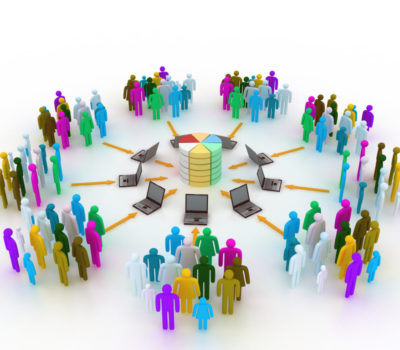
In short, it is the use of electronic means, to promote good governance. It connotes the implementation of information technology in the government processes and functions so as to cause simple, moral, accountable and transparent governance. It entails the access and delivery of government services, dissemination of information, communication in a quick and efficient manner.
Types of Interactions in E-Governance
1. G2G (Government to Government): When the exchange of information and services is within the periphery of the government, is termed as G2G interaction. This can be both horizontal, i.e. among various government entities and vertical, i.e. between national, state and local government entities and within different levels of the entity.
2. G2C (Government to Citizen): The interaction amidst the government and general public is G2C interaction. Here an interface is set up between government and citizens, which enables citizens to get access to wide variety of public services. The citizens has the freedom to share their views and grievances on government policies anytime, anywhere.
3. G2B (Government to Business): In this case, the e-governance helps the business class to interact with the government seamlessly. It aims at eliminating red-tapism, saving time, cost and establish transparency in the business environment, while interacting with government.
4. G2E (Government to Employees): The government of any country is the biggest employer and so it also deals with employees on a regular basis, as other employers do. ICT helps in making the interaction between government and employees fast and efficient, along with raising their level of satisfaction by providing perquisites and add-on benefits.
The national action plan for e-governance, a part of the government's priority agenda, will include banking as one of the areas of focus. It will also include a system of incentives to encourage states to harness the benefits of e-governance.
The Indian Fintech companies are actively partnering with the banks to provide them the required edge and speciality required in the wake of the changing technology landscape.
The potential for fintech has all the more increased due to the Government pushing hard the Digital India programme, launch of NPCI’s Unified Payment Interface etc. The Indian government’s approach is different from other governments towards digitalization.
Technology is changing bank’s businesses and it’s also evolving. The technology strategy is becoming equal to business strategy. IT is disrupting business models. The banks that will respond appropriately stands a chance to have the sustainability they have experienced thus far.
The banks should up their innovation quotient by taking a more collaborative approach trying to supplement and complement the strengths of the fintech community.
The SMPAY have set up innovation centers; the usage of modern technology for continuous improvement for providing fast solution to customer problems. The design thinking concept for better customer experience has a huge potential.

